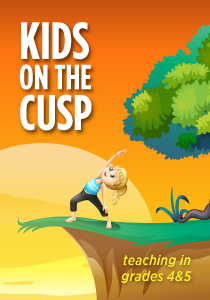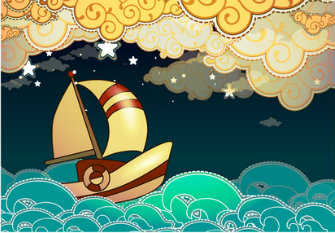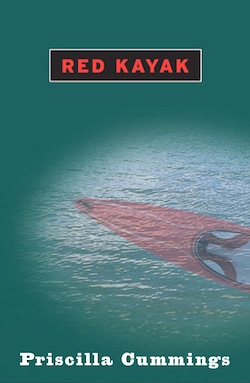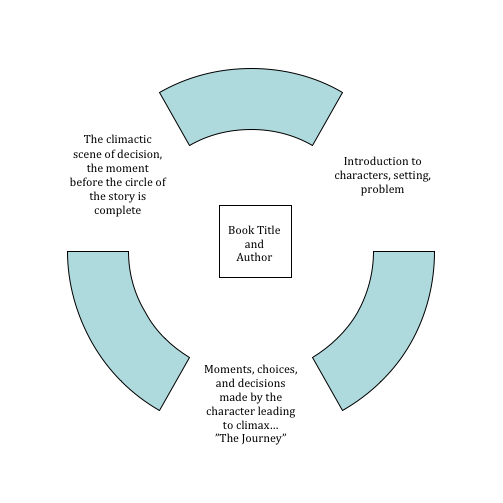The Joys of Reading Aloud Closely
A MiddleWeb Blog

The wind seems to go in and out of my sails on a fairly regular basis these days. Thankfully, throughout my most recent sojourn into the uncharted waters of different reading philosophies, the days, weeks and months that have passed since the implementation of the Common Core Standards have been relatively smooth sailing.
There’s a gale here and there. Just yesterday, I was almost ready to abandon ship or at least stage a mutiny. But some old school ideas can bring me back to a safe harbor when the weather is rough.
Sharing a story together
The habit of reading aloud to my class after lunch is one of my favorite times of the school day. After lunches have been eaten, and forty minutes of recess time have been used to help them get out their jiggles, reading with them is a habit I originally thought had a dual purpose. Our daily, after-lunch reading time allows me to enjoy a good book with them, and it has a calming effect. It helps them transition back into learning mode.
“Okay gang, meet me on the ugly brown rug,” is always met with a murmur of excitement and a comment or two about where we are in the story.
“I hope Brady tells his parents about the drill,” one concerned reader commented the other day. We’d come to a big decision-making moment in the story. Our protagonist had a tough choice to make.
I’ve recently come to see that there are other benefits in reading aloud to students. The more I learn about various philosophies in education and the tweaking of standards and goals, the more I realize how multi-faceted our daily gathering on the rug really is…or really can be, if I set out to help students develop deep thinking skills that can be applied across genres and curriculums.
Out loud and up close
 I came across an article about close reading while flipping through the pages of Think Teachers, a New Jersey-focused magazine that magically appears each month in my cubby hole mailbox in the main office. In its Teacher Talk forum, Dawn Uttel asks, “Do You Read With a Different Set of Eyes?”
I came across an article about close reading while flipping through the pages of Think Teachers, a New Jersey-focused magazine that magically appears each month in my cubby hole mailbox in the main office. In its Teacher Talk forum, Dawn Uttel asks, “Do You Read With a Different Set of Eyes?”
Uttel discusses the difference between reading aloud to students and “close reading,” which helps them “uncover layers of meaning that lead to deep comprehension.”
I have a little educator’s voice in my head that issues a warning cough when a fresh buzzword like this appears. (The phrase “differentiated instruction” still haunts my lesson plans.) I don’t have time to read about yet another technique – I’m still trying to get a handle on our district’s new Reading Workshop instructional approach. But I continued reading the article, and I’m glad I did.
Utter’s suggestions to take our favorite time of day a little further make sense. She asks me to continue to do some of the things I do best: connect with my class, discuss big ideas, share experiences, read and re-read. But there’s also the opportunity to take advantage of their interest in the story, have them look more closely at the prose, and probe a bit for the deeper meanings in the book.
After reading Utter’s article and reflecting some, I could see that while the label was new to me, I already utilize many close reading strategies. I just wasn’t familiar with the phrase (unlike my fellow blogger here at MiddleWeb). I’m just happy to know I’m sailing in the right direction. Stopping to “cite evidence” and explore deeper meaning comes naturally to me. There’s an inherent modeling in it, but I am often unaware of it. I’m just reading with my crew.
Putting the ideas into action
 I thought it might be fun to try out a more intentional close reading activity with my kids during our after-lunch reading time, so I asked a respected colleague about a novel that interested me. Red Kayak by Priscilla Cummings is set in the southeast region of the United States, a social studies topic we would be exploring in the coming weeks. She agreed that Cummings’ book was an excellent read, but cautioned that the story was sad and the plotline was serious in nature.
I thought it might be fun to try out a more intentional close reading activity with my kids during our after-lunch reading time, so I asked a respected colleague about a novel that interested me. Red Kayak by Priscilla Cummings is set in the southeast region of the United States, a social studies topic we would be exploring in the coming weeks. She agreed that Cummings’ book was an excellent read, but cautioned that the story was sad and the plotline was serious in nature.
Red Kayak was indeed a tragic, beautiful story of a teenage boy named Brady, who must choose between his friends, his family, doing the right thing, and facing the consequences. Cummings’ story, set in a small waterman’s crabbing town in Maryland, inspired my class.
It also inspired me to try to use the actual words from the text more actively with the kids. This component had been missing from my read aloud repertoire in the past.
I discovered some perfectly aligned graphic organizers to go with our literacy cruise through the waterways of the Chesapeake. The first was quite thought-provoking, asking the kids to truly dive deep and analyze all the possible scenarios that could happen based on what choice a character might make.

Students responded immediately to this graphic and then looked deeply into their options.
The kids’ response to this organizer was visible on their faces as we created a class chart, and their deeper level of understanding was communicated in their commentaries.
They saw the broader view, the cause-effect relationship of the decision our protagonist would ultimately make. Then I asked them to write about how they would choose…what choice they thought Brady should make (and to support it with evidence from the story, of course!).
We also used a circular story map that highlighted how the main character’s journey comes full circle. It proved to be a simple but effective visual for all of the kids. The connections they created in their response journals, as they applied this circular story analysis tool to their independent reading, revealed their awareness of the story’s central messages.

In the coming days, we are going to get down to some of the nitty-gritty of sentence mechanics and structure, as well as the effective use of dialogue in writing. I’m planning to use Cumming’s novel to enhance these grammar and punctuation lessons.
The ebb and flow of education reform will continue, and so will the new buzzwords. Some of those catch-phase strategies will just make the teaching waters choppier; others will take the best of the old and help us make it new.
It’s comforting to know that I can still spend class time snuggled up with a good book; that I don’t have to let go of teaching tools that I cherish in order to set sail for distant, unfamiliar shores. The new terrain isn’t that unfamiliar after all.


































I hope this works for you, but be cautious that you don’t close read too exhaustively. It can quickly start making a book seem like “work” to a class rather than pleasure, which seems like what you are ultimately shooting for here.
Thanks for the caveat, Dave…. I imagine it’s going to need balance…hoping the right book selection and doing my best to read the kids’ reactions will help me reap the benefits without overkill…time will tell!